Empire-period twin dial skeleton clock by Hubert Sarton of Liège, circa 1805. Double-D black marble base, ormolu turned feet and bezels, large enamel main dial with Arabic numerals for the hours, the 15-minute markers and the 31-day calendar. The subsidiary dial with Moonphase and age of the Moon. Both dial surrounds with night-blue colour and gold stars. Finely cut blued steel hands of a Lépine design, the center-sweeping seconds hand beating the half-seconds and doing a full turn in half a minute - a typical Sarton feature. Circular movement mounted on the two polished brass columns. Countweel hourly and half-hourly strike on a silvered bell mounted on top with a vertical hammer. Compensated pendulum with nine rods ending inside the bob. All wheels with very fine crossing-out, the external ones in a typical Sarton style. Pin-wheel escapement mounted upside-down and knife-edge suspension placed at the bottom of the movement. Autonomy 2 weeks.
H. 23" (57cm), W. 11" (28cm), D. 4 ½" (12cm)
Horologist to the court of princes
Hubert SARTON (1748-1828) lived during a momentous period in history. A product of the Enlightenment, he was also a precursor of the industrial age. Furthermore he was fortunate enough to grow up and live in Liège, which at the time was one of the most dynamic artisan and industrial centres in Europe. Very little has been written about him, yet his contribution to the art of horology is of great importance. He began learning the trade working for his uncle Dieudonné Sarton in 1762, where he demonstrated a remarkable talent for the mechanical sciences. After completing a four-year apprenticeship in Paris at the workshop of Pierre Leroy, eldest son of Julien and brother of Jean-Baptiste Leroy, he returned to Liège in 1772 as Master Clockmaker. Soon after he was appointed ‘Court Clockmaker’ to Duke Charles Alexander of Lorraine, Governor General of Austrian Netherlands, then, as ‘First Mechanic’ to Prince Bishop François-Charles de Velbrück, he enjoyed the benefits of a privileged position which extended his reputation well beyond the Principality of Liège. He also played a civic role being appointed Commissioner and Treasurer of the city of Liège in 1783. In a report published in 1789, the workshop of Hubert Sarton is described in terms that reflect the diversity and quality of his work, as well as his concern for innovation: “At HUBERT SARTON in Liège and Spa, one finds a most comprehensive assortment of clocks and watches, in the latest styles, like gold and silver watches of all kinds […]. One also finds a beautiful assortment of clocks from the most simple to the most complex.” Eleven years later, the French Revolutionary troops stormed Liège putting an end to Austrian rule. It is hard to ascertain exactly what consequences this historic event had on Hubert Sarton’s career. It appears from that time forward he concentrated on the production of skeleton clocks in a variety of models. The number of clocks produced suggests that Sarton certainly managed a large workshop with numerous employees – although no documentation has survived to either confirm or contradict this. Famous for inventing the automatic watch based on a rotor principle, for which he filed a patent at the French Academy of Sciences in 1778, Hubert Sarton created a variety of timepieces throughout his career – Louis XV cartels, Louis XVI mantle clocks, lyre mantle clocks, pendules de compagnie (company clock or waiting-room clock) skeleton clocks and regulators – all equally remarkable for their extraordinary quality and diversity. At once a devoted horologist, mechanic and inventor, Hubert Sarton was one of the major figures of horology in late eighteenth-century Liège. An enlightened man of his time, keen on progress and innovation, his considerable career unfolds as a long series of developments. Having successfully advanced all branches of his trade, this able mechanic dedicated to the art of horology became a master of his art, as witnessed in the exceptional quality and great refinement of his production.
L'Horlogerie et ses Artistes au Pays de Liége, Florent Pholien 1933; L'Age d'Or de l'Horlogerie Liégeoise, Ann Chevalier et André Thiry 2003; Les pendules d'Hubert Sarton, 1748-1828, Horloger-Mécanicien, Inventeur, mémoire présenté en 2009 à la Chambre Nationale des Experts Spécialisés en Meubles, Estampes, Livres, Objets d'Art et de Collection, Paris, Jacques Nève 2009.
'Ansembourg Museum, Liège; Curtius Museum, Liège; François Duesberg Museum, Mons; Jehay Castle Museum, Jehay; "M" Museum, Leuven; Royal Art and History Museums, Brussels; Nederlands Goud, Zilver en Klokkenmuseum, Schoonhoven (NL); Museum Speelklok tot Pierment in Utrecht (NL); Musée des Arts et Métiers, Paris; Patek Philippe Museum, Geneva; Museum der Stadt, Vienna.
On request
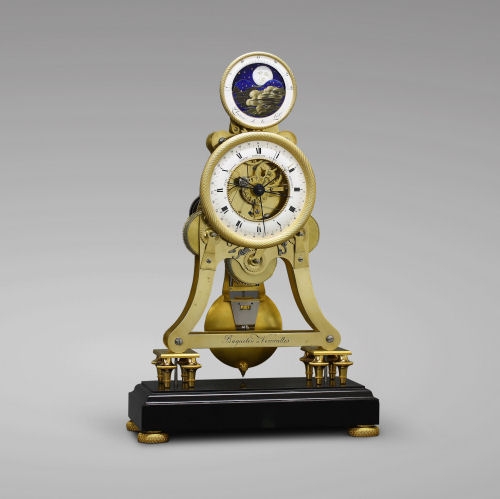
Empire-period astronomical skeleton clock with quarter strike on three bells, signed Baguellin à Versailles, circa 1810.
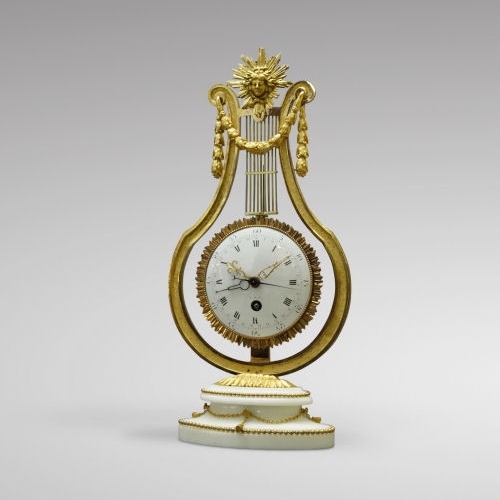
French Louis XVI ormulu and marble mantel timepiece, enamel dial with Roman numerals signed .A.D.F. [...]
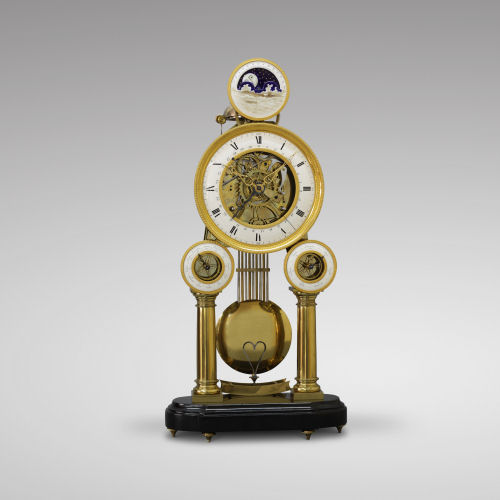
Multi-dial brass, ormolu and black marble quarter-striking skeleton clock by Hubert Sarton circa 1810. [...]
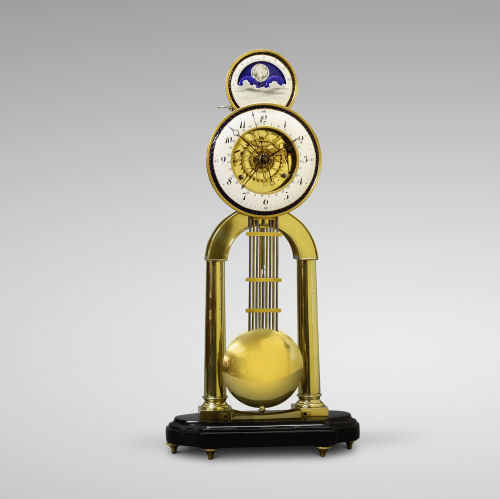
Empire-period twin dial skeleton clock by Hubert Sarton of Liège, circa 1805. Double-D black marble base, [...]
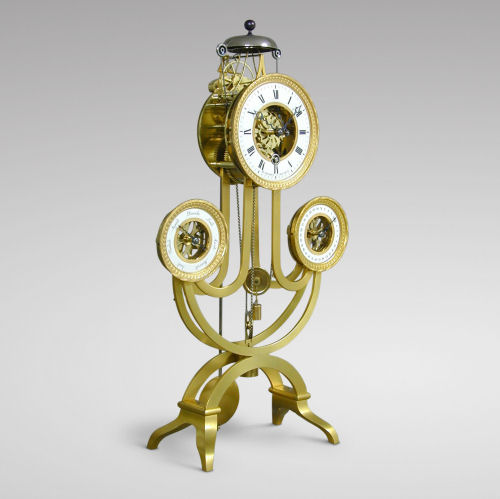
Skeleton clock with remontoire, signed M.Geraets, Hasselt, circa 1820. Now in the Stadsmus, Hasselt.
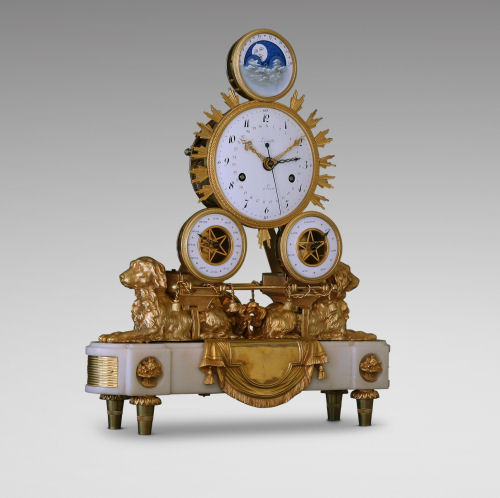
Ormolu and marble 4-dials clock with seconds, week & month calendar, month of the year, moonphase, Lepaute à Paris.
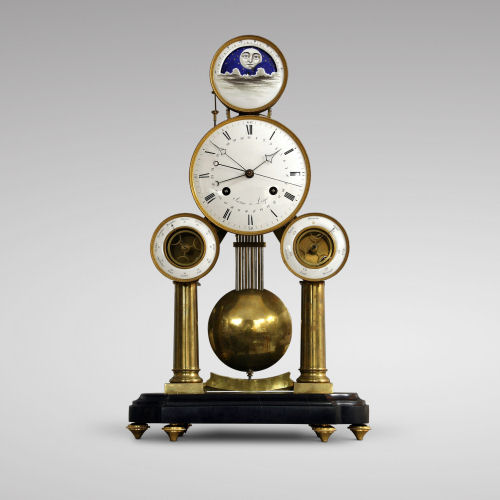
Ormolu, brass and marble 4-dials clock with seconds, week & month calendar, months, moonphase, signed Sarton à Liege.
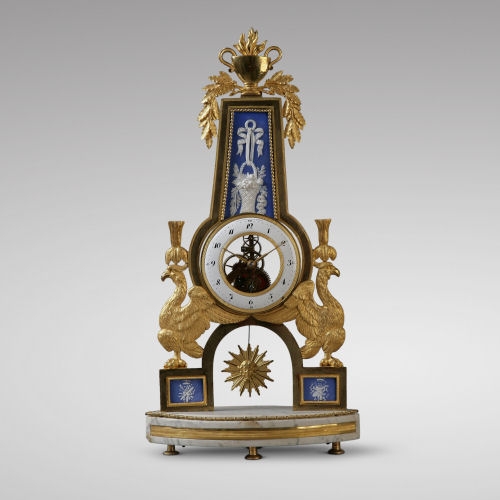
Consulate-period ormolu-mounted French skeleton clock (circa 1800) signed Deverberie à Paris.
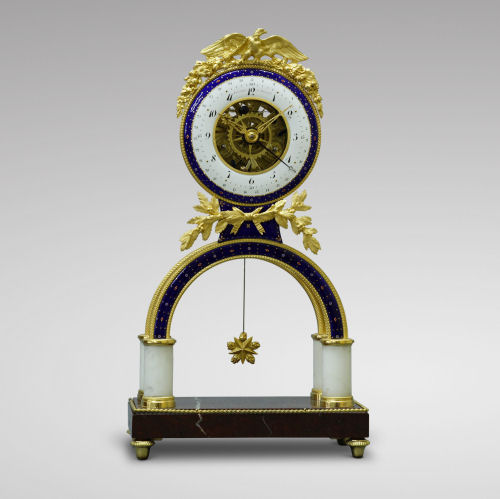
Louis XVI Ormolu, enamel and marble clock with calendar, Faizant à Paris.
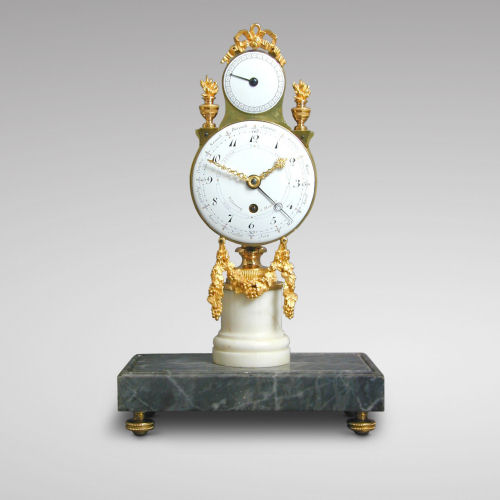
Ormolu mounted marble calendar mantel timepiece signed Villemeÿ à Moulins, late 18th C. Dials by Dubuisson.
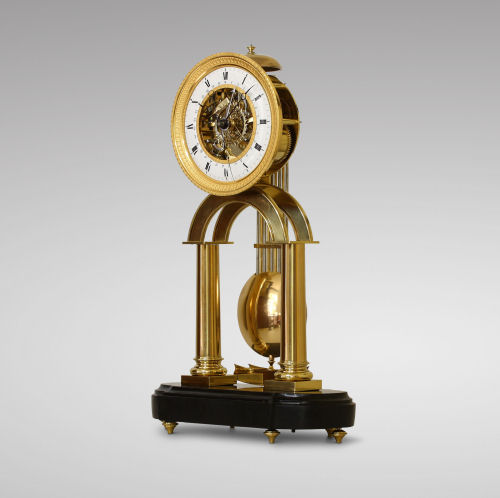
Ormolu, brass and marble single-dial clock with seconds and month calendar, made by Sarton from Liège.